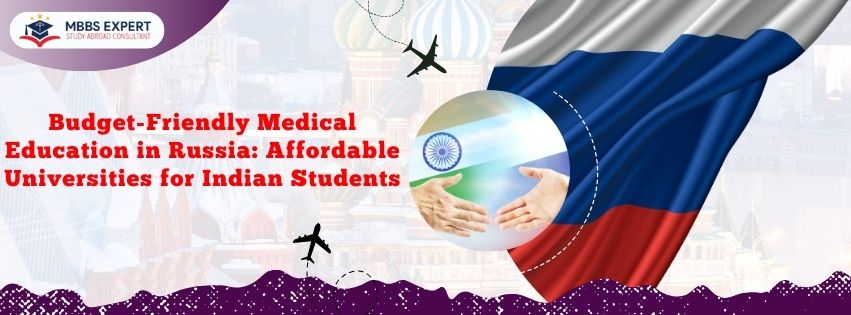Best and Affordable Medical Universities Abroad for Indian Students Pursuing an MBBS degree abroad has…
Bachelor of Performing Arts in the United States: A Guide for Indian Students
9 Total Views , 1 views today
Bachelor of Performing Arts in the United States: A Guide for Indian Students
The United States of America has long been a hub for diverse academic and artistic pursuits, and studying performing arts in the USA is an exciting opportunity for Indian students looking to nurture their creative talents. Pursuing a Bachelor of Performing Arts (BPA) in the US offers access to world-class institutions, a thriving artistic community, and a global perspective on the arts. In this comprehensive guide, we will explore the process, universities, fees, and opportunities for Indian students aspiring to enroll in BPA programs in the United States.
Choosing a University
Selecting the right university is a crucial step in your journey to study performing arts in the USA. American universities are renowned for their high-quality programs, experienced faculty, and state-of-the-art facilities. Here are some top institutions that offer BPA programs:
Table 1: Top Universities for BPA Programs in the USA
| University | Location | Notable BPA Program |
| Juilliard School | New York, NY | Drama |
| University of California, | Los Angeles, CA | Theater |
| Los Angeles (UCLA) | ||
| New York University | New York, NY | Tisch School of the |
| Arts | ||
| University of Michigan | Ann Arbor, MI | School of Music, |
| Theater & Dance | ||
| University of Texas at | Austin, TX | Department of Theater |
| Austin | & Dance |
These universities are renowned for their BPA programs and offer an array of opportunities to develop your artistic skills. Keep in mind that each university has its own unique admission requirements, so be sure to review them thoroughly.
Admission Requirements
The admission process for BPA programs in the United States typically involves a combination of academic qualifications, artistic portfolios, auditions, and interviews. Here is a breakdown of the general requirements:
- Academic Qualifications: Most universities require a high school diploma or an equivalent qualification. Ensure that your academic transcripts meet the minimum GPA requirements for your chosen university.
- Artistic Portfolio: This is a crucial part of your application. Your portfolio should showcase your artistic talents and may include photographs, videos, and written statements. It’s an opportunity to highlight your best work and demonstrate your creativity.
- Audition: Most universities require an audition as part of the application process. Prepare a polished performance that showcases your skills and artistic range. Audition requirements may vary, so check with the university for specific guidelines.
- Interviews: Some universities may require an interview to assess your passion for performing arts and your suitability for the program.
Table 2: General Admission Requirements
| Requirement | Details |
| Academic Qualifications | High school diploma or equivalent |
| Minimum GPA requirements set by the university | |
| Artistic Portfolio | Showcase of your best artistic work |
| May include photographs, videos, and written statements | |
| Audition | Prepare a polished performance that demonstrates your skills and artistic range |
| Interviews | Some universities may require interviews to assess your passion and suitability for the program |
Financial Planning
Studying in the United States may be a significant financial investment. It’s important for Indian students to plan their finances carefully. Tuition fees for BPA programs in the USA can vary widely depending on the university and location. Let’s take a look at some sample tuition fees for international students at the universities mentioned earlier:
Table 3: Sample Tuition Fees for BPA Programs
| University | Tuition Fees (per year) |
| Juilliard School | Approximately $45,000 |
| University of California, | Approximately $43,000 |
| Los Angeles (UCLA) | |
| New York University | Approximately $54,000 |
| University of Michigan | Approximately $50,000 |
| University of Texas at | Approximately $40,000 |
| Austin |
These are approximate figures and may vary from year to year. It’s important to note that tuition is just one part of the overall cost of studying in the USA. You should also consider living expenses, books, and supplies when planning your budget.
Financial Aid and Scholarships
Many American universities offer financial aid and scholarships to international students, including those from India. Scholarships can significantly reduce the financial burden of your education. Make sure to research the specific scholarships available at your chosen university and meet their eligibility criteria. Additionally, there are external scholarship programs and governmental scholarships that Indian students can apply for to support their education in the United States.
Table 4: Scholarships for Indian Students
| Scholarship Name | Eligibility | Award Amount |
| Fulbright-Nehru Master’s | Indian citizens with a minimum 55% | Tuition, airfare, |
| Fellowships | Bachelor’s degree and relevant work | living expenses, |
| experience in their field of study. | and more. | |
| Inlaks Scholarships | Indian citizens with an exceptional | Up to $100,000 |
| academic record and a proposal for a | ||
| specific project. | ||
| Tata Scholarship for | Indian students admitted to specific | Full demonstrated |
| Cornell University | programs at Cornell University. | financial need. |
These are just a few examples of the numerous scholarships available to Indian students. Be sure to check the eligibility criteria and application deadlines for each scholarship.
Visa Requirements
To study in the United States, Indian students must obtain a student visa. The most common student visa for pursuing a BPA program is the F-1 visa. Here are the general steps to obtain an F-1 visa:
Table 5: Steps to Obtain an F-1 Visa
| Step | Details |
| Receive an acceptance letter | You must be admitted to a Student and Exchange Visitor Program (SEVP)-certified school. |
| Pay the SEVIS fee | The SEVIS fee is mandatory and is used to support the Student and Exchange Visitor |
| Information System (SEVIS). | |
| Complete the DS-160 form | The DS-160 is an online application form. You will need to upload a passport-sized |
| photo as part of the application. | |
| Schedule a visa interview | Visit the U.S. embassy or consulate website in India to schedule an interview |
| appointment. | |
| Attend the visa interview | Be prepared to answer questions about your educational plans, financial status, and |
| ties to India. | |
| Pay the visa application fee | The application fee is non-refundable and covers the cost of processing your visa |
| application. | |
| Wait for visa approval | After the interview, the consular officer will decide whether to approve your visa. |
| If approved, you will receive your visa and may make travel arrangements. |
It’s essential to start the visa application process well in advance of your intended travel date to allow for any processing delays.
Living in the USA
Once you arrive in the United States, you’ll need to adjust to a new environment and culture. Here are some tips for Indian candidates:
- Accommodation: Universities often provide on-campus housing for international students. You can also explore off-campus housing options, but make sure to consider factors like safety, convenience, and transportation.
- Cultural Adjustment: Adjusting to a new culture can be challenging. Joining student clubs or organizations related to the performing arts can help you make friends and feel more at home.
- Healthcare: Health insurance is important in the USA, and most universities require international students to have it. Be sure to understand your university’s health insurance policy and how to access medical care.
- Work Opportunities: F-1 visa holders can work on-campus part-time during the academic year and full-time during breaks. However, off-campus employment is typically limited. Familiarize yourself with the rules and regulations regarding employment for international students.
Academic and Career Opportunities
A BPA program in the United States offers numerous academic and career opportunities. Here are some key points to consider:
- Faculty Expertise: American universities often have faculty members who are accomplished artists and professionals in the performing arts. This provides students with valuable insights and mentorship.
- Internship and Networking: The US performing arts industry offers various opportunities for internships and networking. These experiences can be crucial for launching your career in the arts.
- Diverse Artistic Community: The United States is known for its diversity, and this is reflected in its artistic community. You’ll have the chance to collaborate with artists from various backgrounds and styles.
- Post-Graduation Options: After completing your BPA program, you may be eligible for Optional Practical Training (OPT), which allows you to work in your field for up to 12 months. OPT can provide you with valuable work experience in the US.
Conclusion
Pursuing a Bachelor of Performing Arts in the United States is a transformative experience for Indian students. The US offers a rich cultural landscape, world-class universities, and numerous opportunities to develop your artistic talents. While the journey may be challenging, the rewards are equally impressive. With careful planning, financial aid, and a passion for the arts, you can make your dream of studying performing arts in the USA a reality. Remember that your artistic journey is not just about academic achievement; it’s about personal growth, self-expression, and contributing to the global tapestry of the performing arts.





